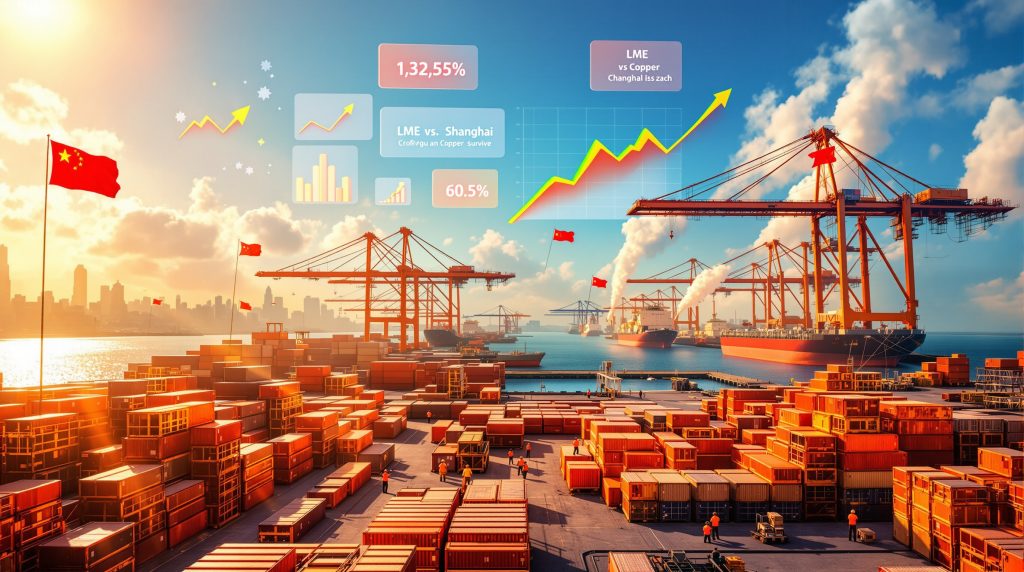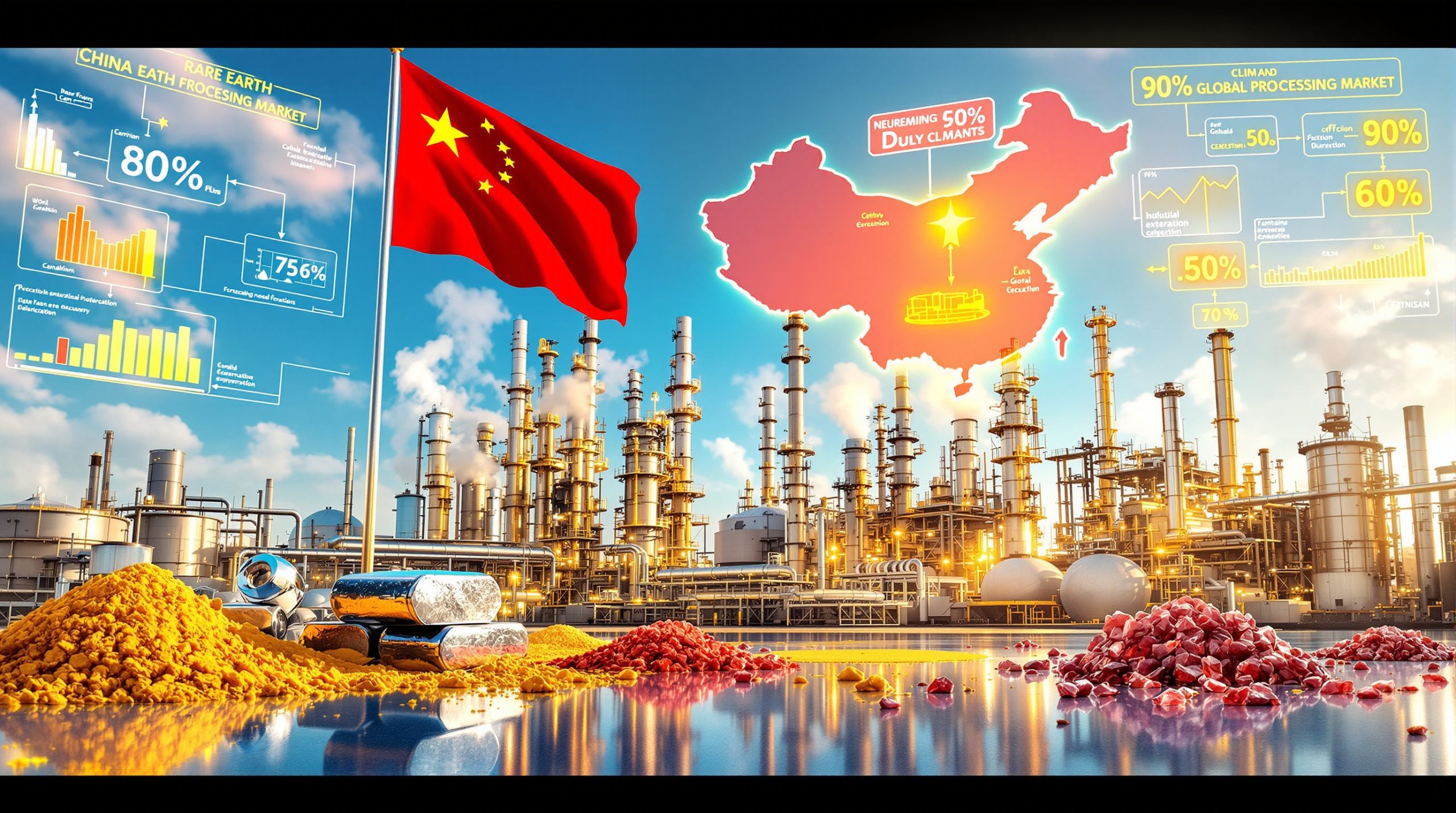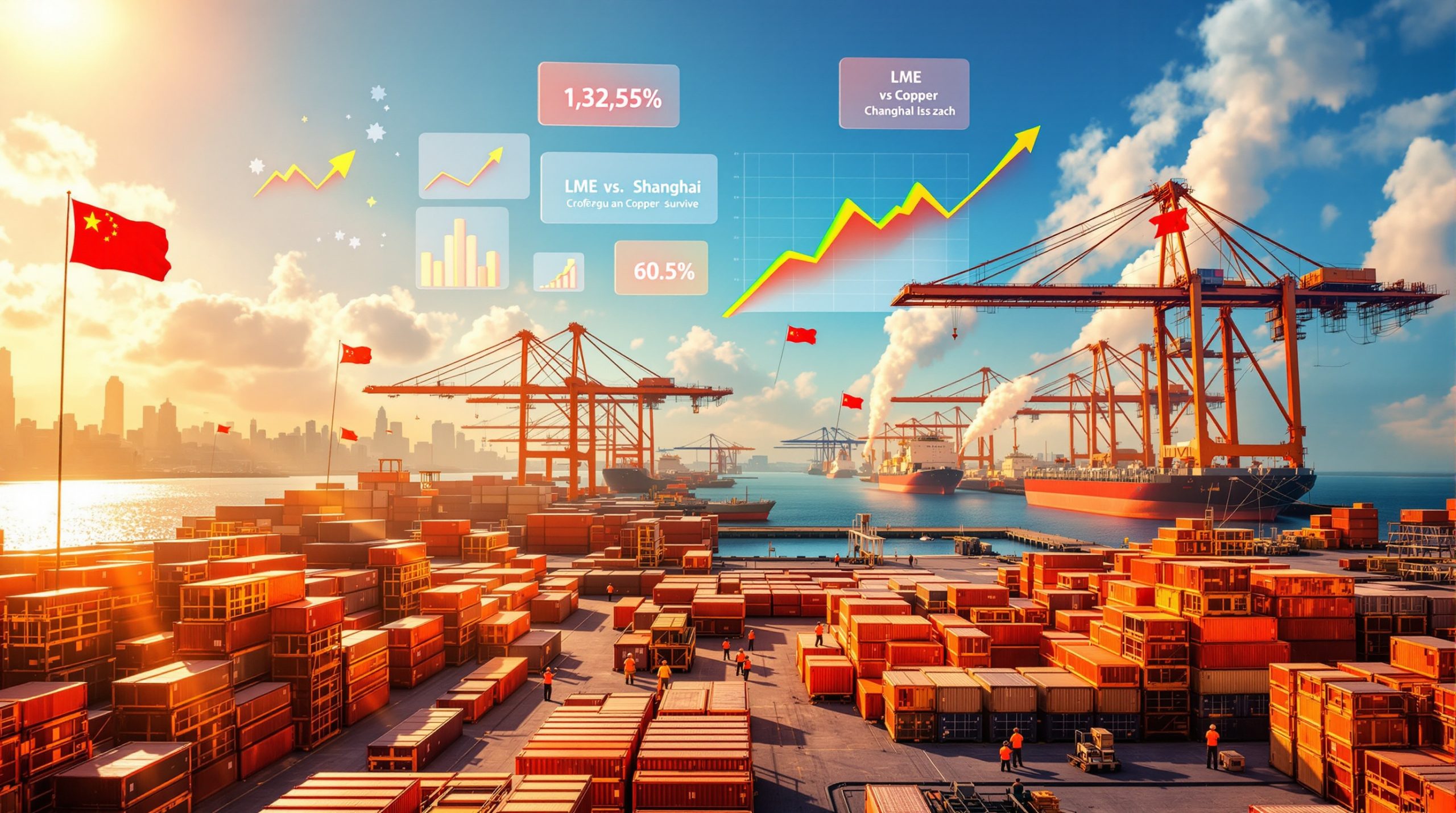Understanding the Arbitrage Mechanism Behind Chinese Copper Exports
The surge in china's copper exports arbitrage during 2025 stems from substantial price differentials between international and domestic markets. When London Metal Exchange prices significantly exceed Shanghai Futures Exchange benchmarks, Chinese producers can generate considerable profits by redirecting refined copper to overseas markets.
In early October 2025, LME copper traded at a premium of 3,234 yuan ($454) per ton compared to Shanghai Futures Exchange prices, according to LSEG Workspace data. By mid-November, this differential had narrowed to 424 yuan per ton, yet remained attractive enough to sustain export flows.
Key Price Differential Factors:
• LME spot premiums reaching multi-year highs amid supply constraints
• Backwardation conditions signaling immediate supply tightness globally
• Regional premium variations across North America and Europe
• Currency exchange rate fluctuations affecting profit margins
The arbitrage opportunity initially gained momentum earlier in 2025 when U.S. Comex exchange premiums soared as traders anticipated potential copper tariffs from Washington. Although the White House ultimately exempted refined copper from tariffs, premiums remained elevated enough to maintain profitable export channels. Furthermore, these conditions have supported various copper price predictions for the remainder of 2025.
How Global Supply Constraints Create Export Opportunities
Mine Disruptions Fuel International Demand
Major copper mining operations outside China have experienced unexpected production interruptions, creating supply gaps that elevate international prices. These disruptions include technical challenges at significant mining operations owned by Ivanhoe Mines and Freeport-McMoRan, constraining ore supply availability in global markets.
The combination of constrained ore supply and strong international demand has created an environment where Chinese smelters can command premium prices for their refined copper output. In addition, this situation represents a fundamental shift from China's traditional role as primarily a copper importer.
Processing Fee Dynamics Drive Export Strategy
Chinese smelters face record-low processing fees in their domestic market, compressing traditional profit margins from treatment and refining charges. To offset these margin pressures, smelters have increasingly turned to export markets where they can capture higher prices through arbitrage opportunities.
Strategic Revenue Enhancement:
• Maximising precious metals byproduct extraction during high gold and silver price environments
• Leveraging massive increases in Chinese smelting capacity to boost ore throughput
• Redirecting refined copper to markets offering superior pricing
• Optimising geographic arbitrage across multiple international markets
However, these developments must be considered alongside global copper production forecast trends that indicate continued supply challenges worldwide.
Record-Breaking Export Volumes Transform Market Dynamics
Chinese copper exports in 2025 are projected to exceed 580,000 metric tons, representing a dramatic increase from the 456,060 tons exported in 2024. This 27.8% minimum increase reflects the sustained nature of china's copper exports arbitrage opportunities throughout the year.
| Export Metric | 2024 | 2025 (Projected) | Change |
|---|---|---|---|
| Total Annual Volume | 456,060 tons | 580,000+ tons | +27.8% |
| Monthly Peak | Variable | 100,000+ tons | Record levels |
| U.S. Exports (Jan-Sept) | 16,763 tons | 164,226 tons | +879% |
October 2025 shipments are forecasted to exceed 100,000 metric tons, marking only the third time in history such monthly volumes have been achieved. This milestone underscores the exceptional nature of current market conditions driving Chinese export activity.
Export Destination Analysis
October 2025 Export Distribution:
• LME Warehouse Deliveries: Approximately 40,000 metric tons targeted for European warehouse systems
• U.S. Market Flows: 40,000 metric tons of non-Chinese-origin copper redirected to American buyers
• Southeast Asian Distribution: 20,000 metric tons allocated to regional markets
The substantial volume directed to U.S. markets reflects continued strength in American copper premiums despite the removal of tariff concerns. From January through September 2025, China's refined copper exports to the United States totalled 164,226 tons, compared to just 16,763 tons for the entire 2024 calendar year. Consequently, analysts are also examining US copper investment insights to understand long-term market implications.
Why Chinese Smelters Are Maximising Export Capacity
Production Capacity Expansion Effects
Chinese smelting capacity has reached unprecedented levels, enabling producers to handle increased ore throughput while maintaining domestic supply commitments. This expansion provides the operational flexibility necessary to capitalise on international arbitrage opportunities without compromising local market obligations.
The massive increase in processing capacity allows smelters to implement sophisticated revenue optimisation strategies that extend beyond traditional copper refining margins. With record-low domestic processing fees constraining profitability, operators have pivoted toward maximising output volumes to capture scale economies.
Revenue Optimisation Through Byproduct Extraction
Chinese smelters are strategically boosting their processing of copper ore to extract gold and silver byproducts during a period of record precious metals prices. This approach provides additional margin enhancement that complements the arbitrage profits available through copper exports.
Multi-Revenue Stream Strategy:
• Processing fee optimisation through export premium capture
• Precious metal byproduct extraction maximisation during favourable Au/Ag pricing
• Geographic arbitrage exploitation across multiple international markets
• Strategic hedging to lock in favourable price differentials
One Chinese copper smelter indicated it is considering shipping several hundred tons of refined copper to Europe monthly, reflecting growing interest in European market opportunities as local suppliers' premiums have increased. Moreover, this aligns with current gold market analysis showing exceptional precious metals pricing conditions.
Impact on Global Copper Market Structure
Supply Chain Rebalancing
The unprecedented surge in Chinese exports provides temporary relief for tight Western markets while potentially creating subtle domestic supply pressures within China. This rebalancing affects international inventory replenishment rates and influences regional price convergence patterns.
The significant monthly inflows to LME warehouses, approximately 40,000 tons in October alone, represent meaningful additions to available global inventory. These volumes help address supply tightness that had developed across international markets due to mining disruptions and strong industrial demand.
Market Equilibrium Factors:
• International inventory replenishment at accelerated rates
• Regional price convergence patterns showing gradual normalisation
• Future contract curve adjustments reflecting improved supply availability
• Industrial user procurement strategies adapting to increased copper availability
Trade Flow Complications and Adaptations
The complexity of modern copper trade flows has increased substantially, with Chinese exporters navigating various regulatory frameworks and market structures. The redirection of non-Chinese-origin copper through Chinese trading channels demonstrates the sophisticated nature of contemporary commodity arbitrage operations.
According to industry analysis, broad arbitrage conditions continue across forward curves, creating ongoing opportunities for strategic positioning. Furthermore, these trade patterns reflect adaptive strategies that optimise duty structures, leverage regional trade agreements, and capitalise on timing differentials across various international markets.
"The arbitrage between LME and Comex has made the global market incredibly tight, creating opportunities for strategic positioning across multiple exchanges and delivery points."
Future Outlook: Sustainability of Export Arbitrage
Market Correction Mechanisms
Several factors could eventually narrow the arbitrage gap and reduce the attractiveness of china's copper exports arbitrage. The sustainability of current export levels depends on continued international supply tightness and maintained price premiums across key destination markets.
Potential Rebalancing Factors:
• Resolution of mining disruptions at major international operations
• Acceleration of domestic Chinese copper demand growth
• Normalisation of international inventory levels
• Currency adjustment impacts affecting margin calculations
The current export boom demonstrates the copper market's sensitivity to supply disruptions and regional price differentials. As global mining operations restore normal production levels and inventory positions normalise, the exceptional arbitrage opportunities driving 2025 export volumes may diminish.
Strategic Considerations for Market Participants
Industrial consumers and investors must prepare for eventual market rebalancing as global supply conditions evolve. The current period of abundant Chinese copper exports provides temporary relief for international markets but should not be viewed as a permanent structural change.
Risk Management Priorities:
• Monitor domestic Chinese inventory accumulation patterns
• Track international mine production restoration progress
• Assess regional premium sustainability across key markets
• Evaluate long-term global copper demand growth trajectories
For instance, companies engaged in copper and gold exploration must consider these evolving trade dynamics when planning future operations and investment strategies.
Navigating the New Copper Trade Reality
China's copper exports arbitrage in 2025 illustrates how rapidly global commodity flows can shift in response to price differentials and supply constraints. The projected 580,000-ton export total represents a fundamental departure from traditional trade patterns, driven by sophisticated arbitrage strategies and capacity optimisation.
The sustainability of these elevated export levels hinges on continued international supply tightness and maintained price premiums. While current conditions favour continued Chinese export activity, market participants should anticipate eventual rebalancing as global supply chains adapt and regional price differentials narrow.
Industrial consumers benefit from increased copper availability in international markets, though domestic Chinese pricing may experience upward pressure as export volumes persist. Traders and investors face both opportunities and risks from the increased volatility and complexity of contemporary copper market dynamics.
The 2025 export boom serves as a compelling case study in how global commodity markets respond to supply disruptions, capacity changes, and arbitrage opportunities. Understanding these dynamics becomes crucial for stakeholders navigating an increasingly interconnected and responsive global copper market.
Disclaimer: This analysis is based on market data and industry reports current as of November 2025. Copper market conditions and trade flows can change rapidly based on supply disruptions, demand variations, and geopolitical factors. Readers should consult current market data and professional advisors before making investment or procurement decisions.
Looking to Capitalise on Copper Market Opportunities?
Discovery Alert's proprietary Discovery IQ model delivers real-time alerts on significant copper discoveries, instantly empowering subscribers to identify actionable opportunities ahead of the broader market. Begin your 30-day free trial today and secure your market-leading advantage in an increasingly dynamic commodity landscape.




